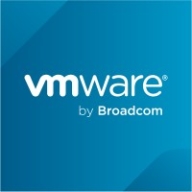

VMware Carbon Black Endpoint and Cortex XDR by Palo Alto Networks are leading endpoint security solutions. Cortex XDR has the upper hand due to its advanced features and comprehensive protection.
Features: VMware Carbon Black Endpoint offers threat detection, incident response, continuous monitoring, and behavioral analysis. Cortex XDR provides AI-driven threat detection, comprehensive analytics, and seamless integration with Palo Alto Networks’ firewall and cloud security products.
Room for Improvement: VMware Carbon Black Endpoint users mention the need for better tool integration, performance, and scalability enhancements. Cortex XDR users highlight the need for better documentation, deployment complexity, and an improved user interface.
Ease of Deployment and Customer Service: VMware Carbon Black Endpoint is noted for its straightforward deployment and responsive customer service. Cortex XDR has a more complex deployment process requiring expertise, but users find its support responsive and helpful.
Pricing and ROI: VMware Carbon Black Endpoint is seen as cost-effective with good ROI due to easy deployment and support. Cortex XDR, while pricier, delivers strong ROI with its expansive feature set and effectiveness in threat detection.
They appreciate the rich telemetry data from the solution, as it provides in-depth threat identification.
I have seen a return on investment with Cortex XDR by Palo Alto Networks, as this product is offered at a minimal cost, and we can find a good ROI from it.
Every vendor has similar support; it depends on how the case is handled and raised.
Their support is efficient and responsive whenever I raise a ticket through my portal.
They did well with handling high-risk threats.
For the last 11 months, we haven't faced any outage issues, so it is a stable product.
Cortex XDR is stable, offering high quality and reliable performance.
All the situations and issues were controlled in a good way by Cortex XDR by Palo Alto Networks.
If the per GB data could be provided at a certain level free of cost or at the same cost which the customer is taking for the entire bundle, that would be better.
The inclusion of this feature would allow the application of DLP policies alongside antivirus policies via a single agent and console, making it more competitive as other OEMs often offer DLP solutions as part of their antivirus products.
Cortex XDR could improve its sales support team, including better commission structures and referral programs.
Compared to competitors such as CrowdStrike and Sophos, the pricing of Cortex XDR by Palo Alto Networks is similar to CrowdStrike but more expensive than Sophos.
Cortex XDR is perceived as expensive by some customers, yet offers dynamic pricing.
It incorporates AI for normal behavior detection, distinguishing unusual operations.
The product provides automation responses in case of a threat attack, severity assessments, centralized manageability, and comprehensive compliance features, resulting in reduced costs.
The way the cases used to collect the data is not intrusive, permitting the infrastructure to collect the data and send it to the Data Lake without problems.
| Product | Market Share (%) |
|---|---|
| Cortex XDR by Palo Alto Networks | 3.7% |
| VMware Carbon Black Endpoint | 1.8% |
| Other | 94.5% |


| Company Size | Count |
|---|---|
| Small Business | 41 |
| Midsize Enterprise | 18 |
| Large Enterprise | 36 |
| Company Size | Count |
|---|---|
| Small Business | 31 |
| Midsize Enterprise | 9 |
| Large Enterprise | 30 |
Cortex XDR by Palo Alto Networks delivers comprehensive endpoint security, integrating well with other systems to offer robust threat detection and real-time protection through AI-driven analytics.
Cortex XDR by Palo Alto Networks offers advanced endpoint protection and threat detection through AI and behavior-based analytics. Its user-friendly design simplifies integration with firewalls, delivering multi-layered protection with low resource consumption. Valued for policy management, USB control, and incident correlation, Cortex XDR enhances threat management and real-time threat hunting capabilities. However, users note challenges with third-party integration, reporting, and dashboard automation. Agent performance across operating systems and memory consumption are areas for improvement, alongside reducing false positives and simplifying endpoint management and setup.
What features does Cortex XDR offer?
What benefits should be considered in reviews?
Cortex XDR is crucial in industries requiring robust endpoint protection, such as finance, healthcare, and technology. It supports malware detection, behavioral analysis, and ransomware mitigation across endpoints, including remote work environments, providing comprehensive threat visibility and security policy management. The solution's integration with firewalls and specialized industry requirements enhances security posture in diverse operational settings.
VMware Carbon Black Endpoint enhances endpoint security with its robust EDR, threat detection, and live response features. The cloud-based architecture supports remote management and easy setup while behavioral monitoring and dynamic grouping minimize security risks.
VMware Carbon Black Endpoint is designed for those seeking comprehensive endpoint protection. With its cloud-based deployment, organizations experience streamlined remote control and simplified rollout processes. Its behavioral monitoring, incident response capabilities, and firewall integration deliver advanced security measures. Although it addresses many security challenges, areas like manual alert management, on-demand scanning, and integration with systems like AlienVault USM require refinement. Improved UI, EDR components, and flexible pricing models would enhance user satisfaction. On-premise deployment infrastructure and compatibility issues with some operating systems need attention. Enhanced reporting, container security, and multi-tenancy support are also essential for fulfilling industry needs. AI-driven analysis and threat isolation empower companies by fostering proactive management.
What are the key features of VMware Carbon Black Endpoint?
What benefits should users look for when evaluating VMware Carbon Black Endpoint?
VMware Carbon Black Endpoint finds extensive application in industries focused on stringent security requirements. Managed security service providers leverage its capabilities to deliver comprehensive protection to multiple clients worldwide. Organizations use it primarily for antivirus protection and incident management, integrating it with their existing security frameworks to strengthen endpoint visibility and real-time threat prevention. Its advanced detection and application control features make it a preferred choice in industries that prioritize robust security measures. However, it requires improvements in terms of system compatibility and customization flexibility to better serve diverse industry environments.
We monitor all Endpoint Protection Platform (EPP) reviews to prevent fraudulent reviews and keep review quality high. We do not post reviews by company employees or direct competitors. We validate each review for authenticity via cross-reference with LinkedIn, and personal follow-up with the reviewer when necessary.